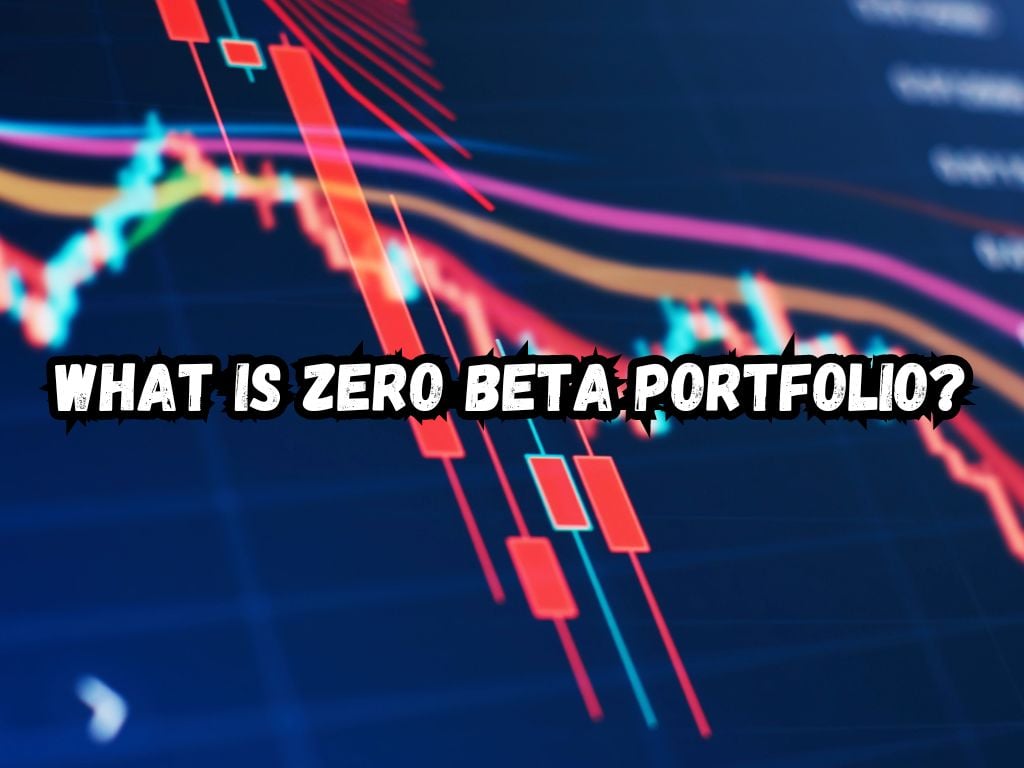In the world of investments, managing risk while striving for satisfactory returns is a craft as much as it is a science. One of the pivotal concepts in balancing this act is the use of beta, a measure of an investment’s volatility in relation to the market.
Let’s delve into what is the zero beta portfolio and how it can be leveraged for risk management.
What is the Zero Beta Portfolio?
Beta is a statistical measure used in finance to describe the volatility of an investment or a portfolio relative to the overall market. The market itself has a beta of one.
Therefore, an investment with a beta higher than one is more volatile than the market, while a beta less than one means it is less volatile.
Understanding beta is crucial as it helps investors comprehend how changes in the market could affect their investments.
The Concept of Zero Beta Portfolio
A zero beta portfolio is structured to have a beta of zero, meaning its performance is uncorrelated with that of the market. This concept is rooted in the Capital Asset Pricing Model (CAPM), which describes the relationship between systematic risk and expected return.
The fundamental idea is that by carefully selecting and balancing assets that positively and negatively correlate with the market, one can theoretically nullify market-related volatility.

Building a Zero Beta Portfolio
Creating a zero beta portfolio involves selecting assets that, when combined, achieve a collective beta of zero. This often requires incorporating a variety of asset types, such as stocks, bonds, and possibly derivatives like options and futures.
Each asset class contributes differently to the portfolio’s beta. For example, adding a short position in a high-beta stock or using derivatives to hedge against potential market gains or losses.
Real-world application of assets in zero beta portfolios generally includes combinations that counterbalance each other’s market response.
Benefits of a Zero Beta Portfolio
The primary benefit of a zero beta portfolio is its ability to minimize systemic risk due to its non-correlation with market movements.
This makes it an appealing strategy for conservative investors or those in uncertain or highly volatile market conditions.
By focusing solely on the intrinsic value and performance of the selected assets, such portfolios can achieve stable returns independent of market dynamics.
Drawbacks and Considerations
Despite its benefits, managing a zero beta portfolio is not without challenges. Maintaining a zero beta status might require frequent rebalancing and can involve complex strategies that incur higher transaction costs.
Moreover, such portfolios might sacrifice higher returns for stability, as they are designed to be unaffected by bullish market trends.
Managing a Zero Beta Portfolio
Effective management of a zero beta portfolio necessitates continuous monitoring and adjustment to align with the goal of zero correlation to the market.
This involves reassessing the portfolio’s performance against market movements and rebalancing assets as needed. Tools and techniques such as regression analysis and beta coefficient calculations are essential in this ongoing process.

Pro Tips
To maximize the effectiveness of a zero beta portfolio, investors should remain vigilant in their market analysis and asset selection criteria.
It is vital to understand the factors that may influence asset performance individually and collectively. Regular portfolio reviews and staying informed on market conditions will help in making timely adjustments to maintain the zero beta status.
Frequently Asked Questions
Is a zero beta portfolio truly risk-free?
No investment is entirely risk-free. Zero beta portfolios minimize market risk but may still be exposed to other forms of risk, such as credit or liquidity risks.
Can a zero beta portfolio outperform the market?
Generally, zero beta portfolios are not designed to outperform the market. They aim for stability and are better suited for minimizing risk rather than maximizing returns.
How often should a zero beta portfolio be rebalanced?
The rebalancing frequency can depend on several factors, including market conditions and the inherent volatility of the included assets. It could be quarterly, semi-annually, or annually.
Are there any asset classes that are naturally zero beta?
Most asset classes have some level of market correlation. However, certain fixed-income securities and alternative investments might exhibit low correlations in specific contexts.
How does a zero beta portfolio fit into a broader investment strategy?
A zero beta portfolio can be an effective component in a diversified investment strategy, particularly for risk-averse investors or those seeking stability during volatile market phases.
This guide sets the foundation for informed investment decisions, particularly for those interested in harnessing the stability offered by zero beta portfolios amidst fluctuating markets.
Conclusion
Zero beta portfolios represent a sophisticated risk management tool that can help investors stabilize their returns in volatile or uncertain markets. By understanding and applying the principles of beta, investors can craft portfolios that meet their specific risk tolerance and investment goals.
As with any investment strategy, consultation with financial professionals is recommended to tailor approaches to individual needs and circumstances.


 Tags:
Tags:










